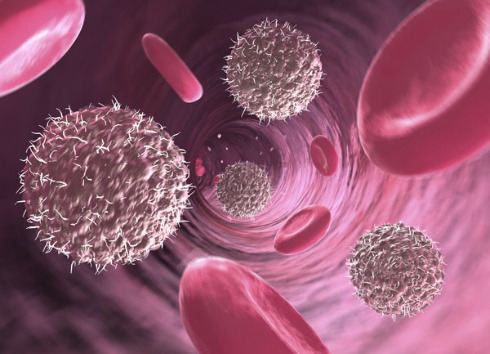Mar. 14, 2023 Research Highlight Biology
The secret to preserving stem cell identity over time
The mechanism by which stem cells pass on their ability to change into other kinds of cells to the next generation has been uncovered
Throughout our lives, a small pool of hematopoietic stem/progenitor cells (HSPCs) ensures the stable production of a wide range of blood and immune cells in our bodies. RIKEN researchers have now discovered how these cells preserve their ability to develop into different cells—even after many years and countless rounds of cell division1.
The expression of genes is partly controlled by changes in the organization of chromatin, a tightly packed complex of DNA and protein. For example, chromatin can interact with a multi-protein assembly known as polycomb repressive complex 1 (PRC1). This silences nearby genes by chemically modifying histones—the basic units of DNA packing.
Evidence that PRC1 helps establish and preserve HSPC identity—ensuring that these progenitors do not begin developing into more functionally specialized cells—intrigued Tomokatsu Ikawa of the RIKEN Center for Integrative Medical Sciences (IMS) and the Tokyo University of Science.
“However, PRC1 forms at least six complexes,” Ikawa says. “And differences in the various partner proteins involved can profoundly alter how it affects gene expression.”
Now, the importance of a complex formed by PRC1 with the protein PCGF1 has been highlighted in a careful analysis of mouse HSPCs by a team led by Ikawa and Haruhiko Koseki, based at both IMS and Chiba University.

Figure 1: Strict gene regulation is essential for ensuring the preservation of a stable stem cell pool that can steadily produce new blood cells over the course of a lifetime. © Roger Sutcliffe/The Image Bank/Getty Images
Significantly, this PRC1–PCGF1 complex also helps to ensure the incredible developmental flexibility of embryonic stem cells, which can mature into any other cell type in the body.
The researchers also determined how the complex helps to preserve HSPC identity during cell division. As part of this process, each chromosome replicates to produce sufficient DNA for two new ‘daughter’ cells. But the newly synthesized DNA lacks the chromatin organization and modifications present in the parental DNA.
This is where PRC1–PCGF1 comes in. It interacts with actively replicating chromosomes and coordinating the formation of chromatin patterns that ensure that daughter cells retain the same gene-expression patterns as the parent cell.
Accordingly, loss of PCGF1 in these cells tends to cause them to differentiate into various immune cell subtypes. “PCGF1 is needed to ensure that the proper chromatin conformation is inherited after DNA replication,” says Ikawa.
While these findings are an important step toward understanding the molecular pathways governing the development of blood cells, they only scratch the surface of the underlying complexity. Ikawa and colleagues are now untangling how PRC1 acts with other proteins in the PCGF1 family in the context of HSPCs.
“For example, PCGF4 is important for maintaining HSPC identity, whereas other PCGFs seem to be critical for differentiation of the HSPCs,” says Ikawa.
Related contents
- Three transcriptional circuits found between hematopoietic stem cells and B cells
- How an embryo stops being an egg
- To B or not to B
Rate this article
Reference
- 1. Takano, J., Ito, S., Dong, Y., Sharif, J., Nakajima-Takagi, Y., Umeyama, T., Han, Y.-W., Isono, K., Kondo, T., Iizuka, Y. et al. PCGF1-PRC1 links chromatin repression with DNA replication during hematopoietic cell lineage commitment. Nature Communications 13, 7159 (2022). doi: 10.1038/s41467-022-34856-81
